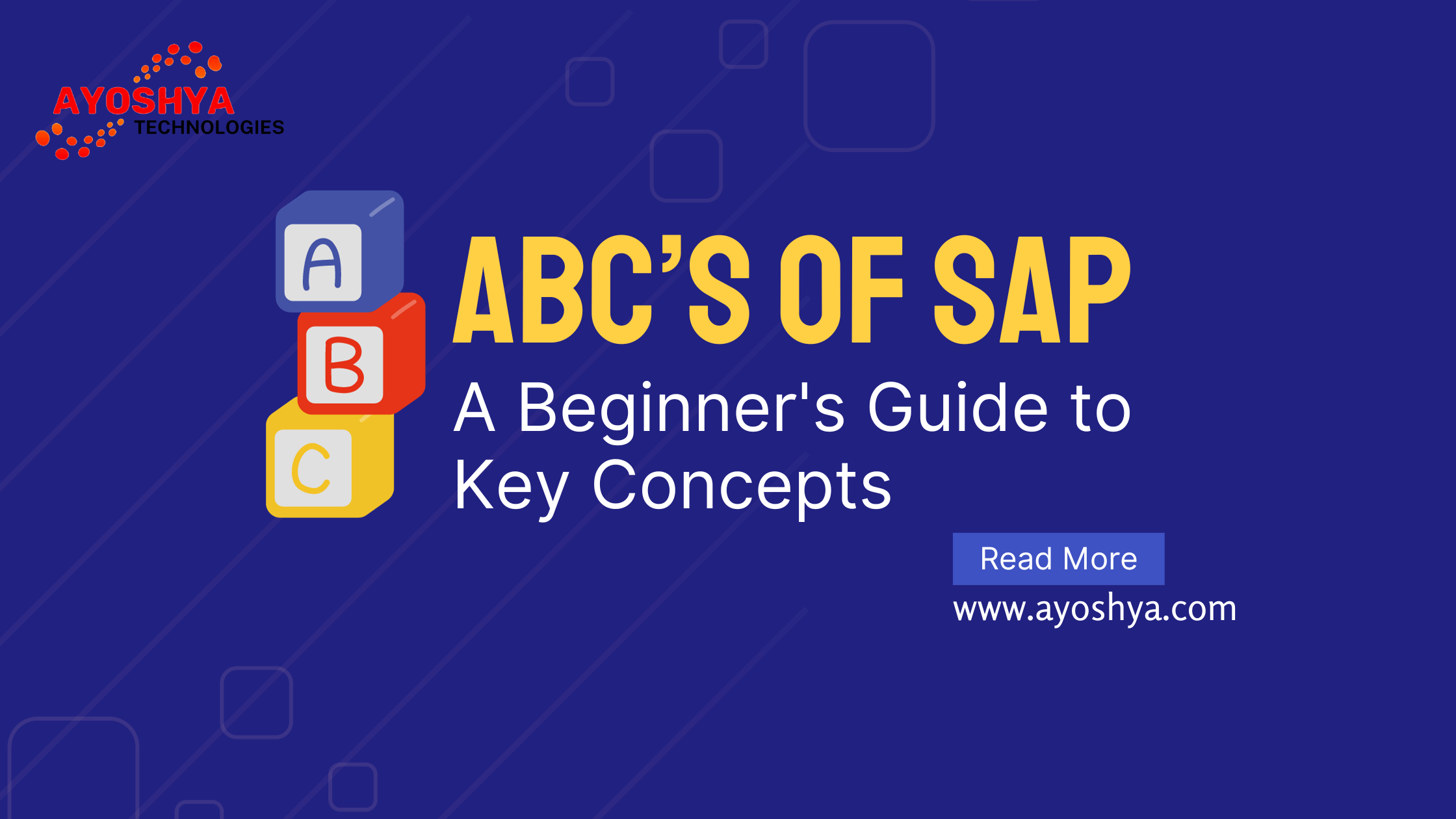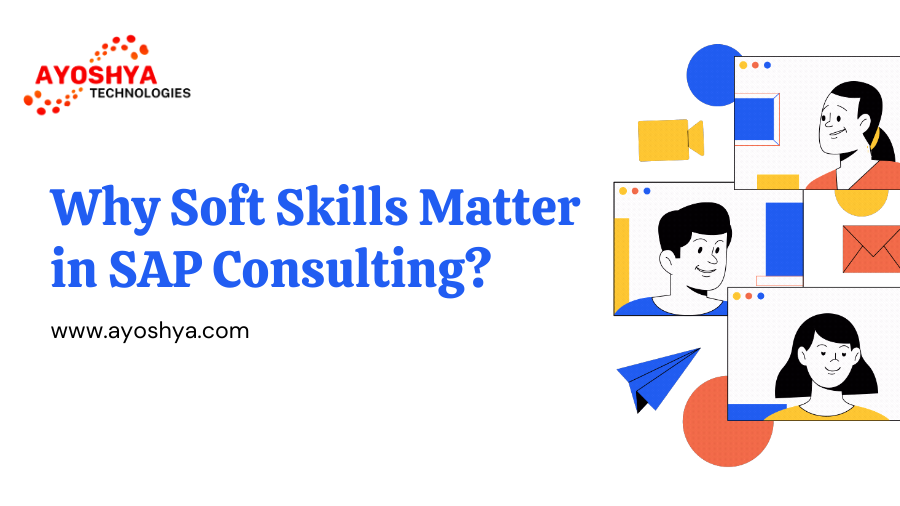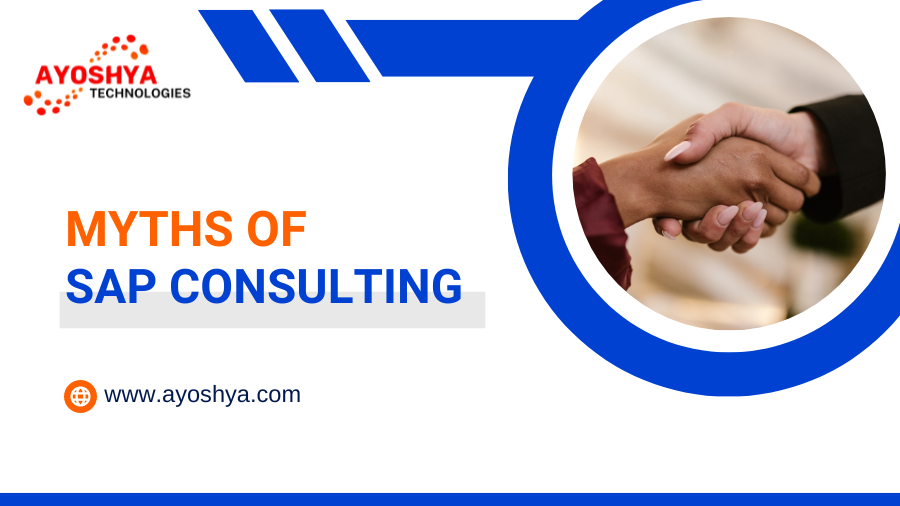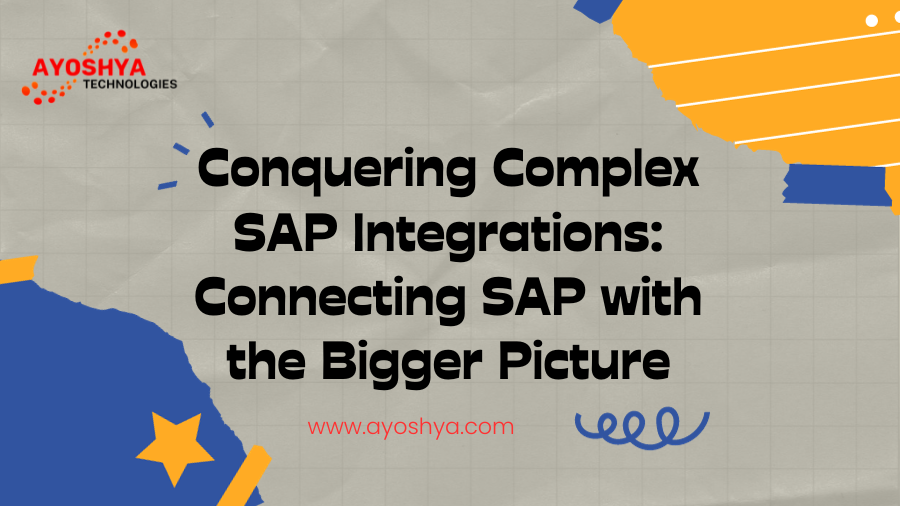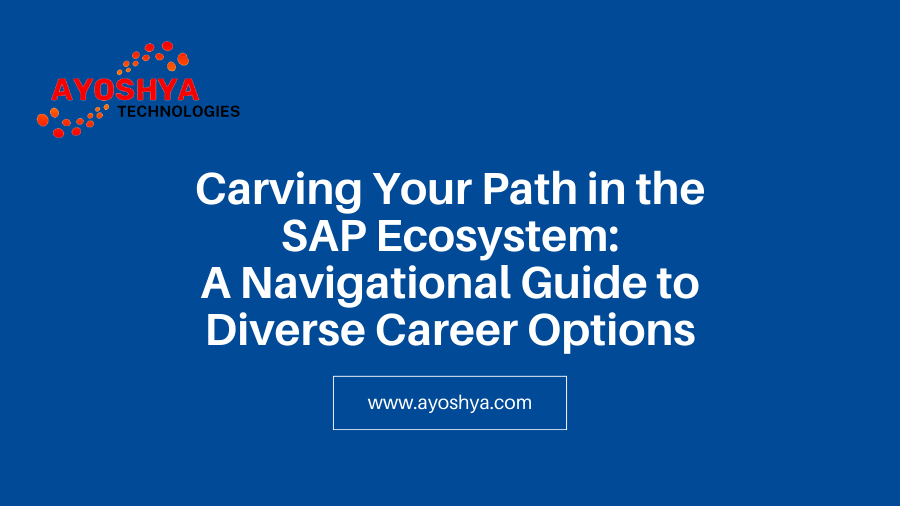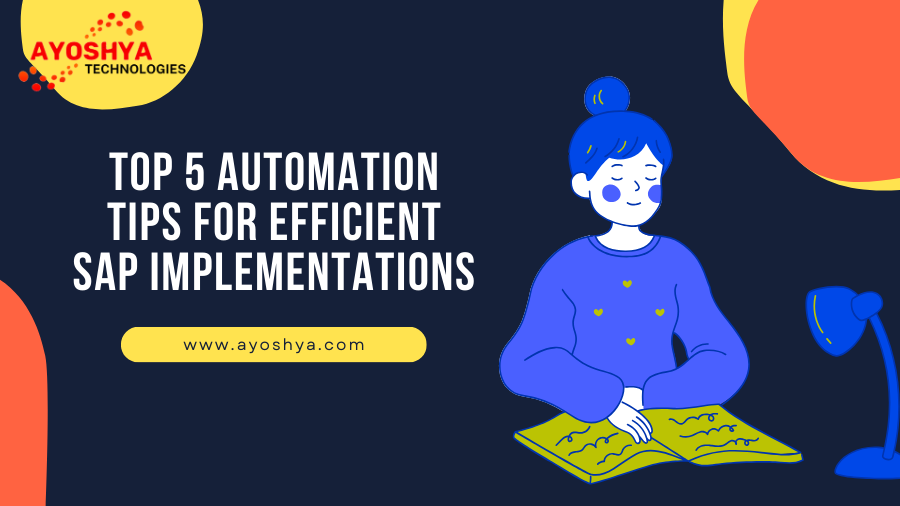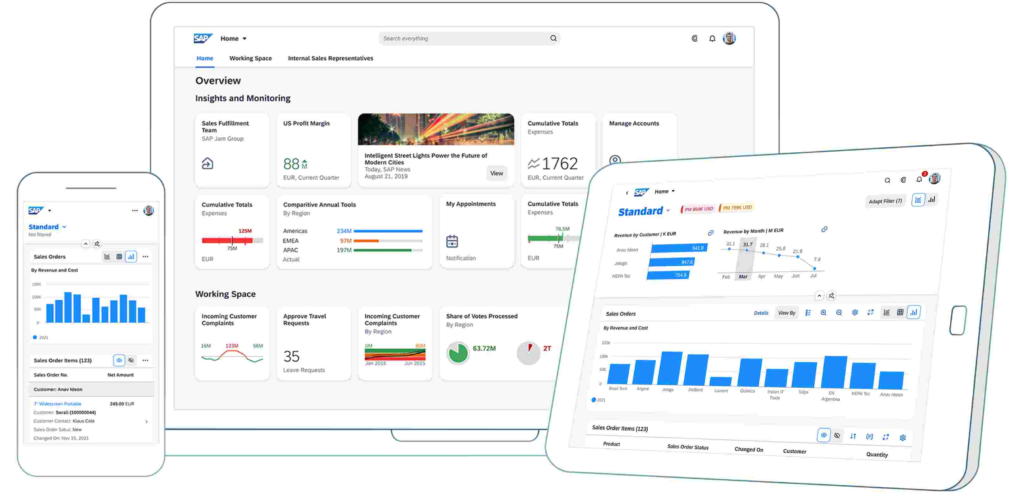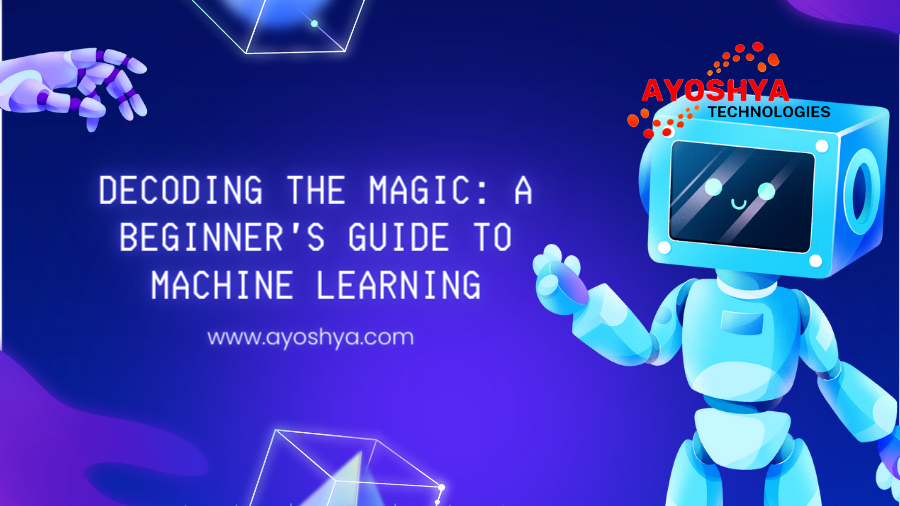ABCs of SAP: A Beginner’s Guide to Key Concepts
Stepping into the SAP world can feel like entering a labyrinth of acronyms and complex jargon. For beginners, navigating this vast ecosystem can be intimidating. But fear not, intrepid explorer! This beginner-friendly guide will unpack the essential ABCs of SAP, providing you with a clear, concise, and hopefully less stressful entry point into this powerful software suite.
Power of SAP Modules: A Comprehensive Overview
ABCs of SAP: A is for Architecture: Understanding the Foundation
Imagine SAP as a towering skyscraper. Its sturdy client-server architecture forms the bedrock, separating the user interface (client) from the core processing power (server). This ensures smooth operation and scalability, allowing large data volumes and multiple users to access the system simultaneously.
ABCs of SAP: B is for Business Processes: The Heart of the System
At the heart of SAP lies its core functionality: streamlining and automating your business processes. From finance and logistics to human resources and customer relationship management, SAP offers modules designed to optimize every aspect of your operations. Think of these modules as specialized departments within the building, each catering to a specific function.
ABCs of SAP: C is for Customization: Tailoring the Experience
While SAP provides a robust framework, its beauty lies in its adaptability. You can customize the system to fit your unique business needs and workflows. This flexibility allows you to configure screens, reports, and processes to match your specific requirements, ensuring smooth integration with your existing systems and practices.
ABCs of SAP: D is for Data: The Lifeblood of SAP
Data is the fuel that keeps the SAP engine running. Accurate and well-organized data is crucial for generating meaningful reports, insights, and forecasts. Master data management, data cleansing, and data migration are essential skills for ensuring the system’s efficiency and reliability. Think of data as the electricity powering the skyscraper – without it, everything comes to a standstill.
Different SAP Modules: A Comprehensive Guide
ABCs of SAP: E is for ERP: The Integrated Advantage
One of SAP’s key strengths is its Enterprise Resource Planning (ERP) capabilities. This means that different modules, like finance, manufacturing, and sales, are seamlessly integrated, fostering data flow and communication between departments. Imagine all the departments in the skyscraper having direct access to a central database and communication system, eliminating silos and promoting collaboration.
F is for Functionality: Unveiling the Toolbox
SAP offers a vast array of functionalities, depending on the specific modules you choose. From core accounting and inventory management to advanced supply chain optimization and customer relationship management, the system caters to a wide range of business needs. Think of these functionalities as the tools and equipment found within each department, empowering you to perform specific tasks and achieve desired outcomes.
G is for GUI: Your Window to the System
The Graphical User Interface (GUI) is your window into the SAP world. Its intuitive design allows you to navigate the system, access information, and perform actions with ease. Think of the GUI as the elevator system in the skyscraper, taking you to different floors (modules) and providing access to various tools and resources.
H is for HANA: The Next-Generation Engine
SAP HANA is a powerful in-memory computing platform that revolutionizes data processing within SAP. It allows for real-time analysis of large datasets, enabling faster decision-making and improved business agility. Think of HANA as a high-speed engine powering the skyscraper, significantly boosting its performance and data processing capabilities.
I is for Implementation: Bringing SAP to Life
Implementing SAP successfully requires careful planning, expert guidance, and a dedicated team. From data migration and user training to customization and ongoing support, a well-defined implementation strategy is crucial. Think of implementation as the construction phase of the skyscraper – a complex process requiring skilled professionals and a blueprint for success.
J is for Jobs and Careers: Opportunities in the SAP Ecosystem
With its widespread adoption across industries, SAP expertise is highly sought-after. From consultants and developers to analysts and project managers, a wide range of career opportunities exist within the SAP ecosystem. Think of the SAP world as a bustling city, offering exciting career paths for individuals with the right skills and knowledge.
K is for Knowledge: Continuous Learning is Key
The SAP landscape is constantly evolving, with new features and functionalities emerging regularly. Continuous learning and upskilling are crucial for staying ahead of the curve and maximizing the potential of your SAP investment. Think of knowledge as the ongoing maintenance and upgrades required to keep the skyscraper at its peak performance.
L is for Learning Resources: Where to Find Answers
Numerous resources are available to support your SAP learning journey. From official SAP documentation and online tutorials to training courses and community forums, a wealth of knowledge is at your fingertips. Think of these resources as the library and learning centers within the skyscraper, providing guidance and support for your educational endeavors.
Measuring the impact of your SAP investment is crucial. Defining key performance indicators (KPIs) and tracking them regularly allows you to evaluate the system’s effectiveness and identify areas for improvement. Think of KPIs as the gauges and sensors within the skyscraper, monitoring its performance and alerting you to potential issues.
N is for Networking: Building Your Community
Connecting with other SAP users and professionals can be an invaluable source of support and knowledge. Participating in user groups, forums, and conferences allows you to share experiences, troubleshoot problems, and stay updated on the latest trends. Think of the SAP community as the network of interconnected businesses surrounding the skyscraper, fostering collaboration and mutual benefit.
O is for Optimization: Continuously Improve
Once your SAP system is up and running, the work doesn’t stop. Continuously review your processes, identify opportunities for improvement, and leverage new functionalities to optimize your system’s performance. Think of optimization as the ongoing renovation and modernization efforts for the skyscraper, ensuring it remains relevant and competitive in the ever-evolving business landscape.
P is for Partner Ecosystem: Leveraging Expertise
Navigating the complexities of SAP can be challenging. Utilizing the expertise of certified SAP partners can make your journey smoother and more efficient. These partners offer a range of services, from implementation and customization to training and ongoing support. Think of SAP partners as the skilled contractors who can help you build, maintain, and upgrade your skyscraper, ensuring its functionality and long-term viability.
Q is for Questions: Embrace Curiosity
Don’t be afraid to ask questions! The SAP world is vast and complex, and there’s always more to learn. Seek out mentors, consult experts, and participate in discussions to broaden your understanding and overcome challenges. Remember, even the most towering skyscrapers were constructed one question and solution at a time.
R is for Resources: Utilize Available Tools
SAP offers a wealth of resources to help you get the most out of your system. From detailed documentation and online tutorials to webinars and user guides, there’s a wealth of information at your disposal. Think of these resources as the blueprints, instruction manuals, and maintenance guides for your skyscraper, providing valuable guidance and troubleshooting support.
S is for Security: Protecting Your Data
Data security is paramount in the digital age. SAP offers robust security features and data encryption protocols to safeguard your sensitive information. Implementing best practices and staying vigilant about potential threats is crucial for maintaining a secure and trustworthy environment. Think of security as the alarm system, firewalls, and security guards of your skyscraper, protecting its valuable assets and ensuring the safety of its occupants.
T is for Technology: Embracing Innovation
SAP is constantly evolving, with new technologies and functionalities emerging regularly. Staying abreast of these advancements and incorporating them into your system can unlock new opportunities and keep you ahead of the competition. Think of technology as the cutting-edge materials and construction techniques used to build the skyscraper, ensuring its future-proof functionality and adaptability.
U is for User Adoption: Engaging Your Team
Successful SAP implementation hinges on user adoption. Encouraging team members to embrace the system, providing comprehensive training, and addressing concerns head-on are crucial for maximizing its benefits. Think of user adoption as the residents and workers inhabiting the skyscraper – their comfort, productivity, and engagement are essential for its overall success.
V is for Value: Demonstrating ROI
Investing in SAP is a significant decision. Demonstrating the system’s return on investment (ROI) is key to securing buy-in and justifying future investments. Quantify the improvements in efficiency, cost savings, and revenue generated by SAP to showcase its tangible value. Think of ROI as the profitability and productivity metrics demonstrating the skyscraper’s worth, justifying its construction and ongoing maintenance.
W is for Workflow Optimization: Streamlining Processes
SAP excels at streamlining and automating workflows. Analyze your existing processes, identify bottlenecks, and utilize SAP functionalities to eliminate redundancies and optimize your operations. Think of workflow optimization as fine-tuning the internal systems and communication pathways within the skyscraper, ensuring smooth flow and optimal efficiency.
X is for Experience: Learning from Others
Learning from the experiences of others can be invaluable. Read case studies, attend conferences, and connect with successful SAP users to gain insights and adapt their best practices to your own context. Think of experience as the wisdom passed down from previous generations of builders, guiding you in constructing and managing your own successful SAP skyscraper.
Y is for You: Take Ownership of Your Journey
Remember, your SAP journey is unique. Take ownership of your learning, actively seek out knowledge, and embrace the challenges. With dedication and perseverance, you can unlock the immense potential of SAP and build a system that drives efficiency, optimizes your operations, and propels your business to new heights.
Z is for the Future: Embrace Continuous Evolution
The SAP landscape is dynamic and ever-evolving. New technologies, trends, and challenges emerge constantly. By remaining adaptable, embracing continuous learning, and proactively navigating change, you can ensure your SAP system remains relevant, agile, and future-proof. Think of the future as the ever-changing skyline around your skyscraper, requiring constant adaptation and innovation to maintain its competitive edge and thrive in the dynamic business landscape.
Conclusion: Your Journey Awaits
Demystifying the ABCs of SAP is just the first step on your learning journey. With the foundation laid and equipped with the right tools and resources, you’re now ready to embark on your own SAP adventure. Remember, the path may be complex, but the rewards are vast. Be curious, seek knowledge, embrace challenges, and never stop learning. With dedication and a spirit of exploration, you can conquer the ever-evolving world of SAP and build a system that fuels your business success.



